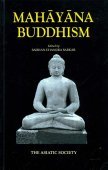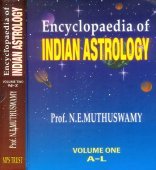Arranging: 2 definitions
Introduction:
Arranging means something in Hinduism, Sanskrit, the history of ancient India. If you want to know the exact meaning, history, etymology or English translation of this term then check out the descriptions on this page. Add your comment or reference to a book if you want to contribute to this summary article.
In Hinduism
Vastushastra (architecture)
Source: Shodhganga: Elements of Art and Architecture in the Trtiyakhanda of the Visnudharmottarapurana (vastu)Arranging of clay bricks was skillfully done by professional architects after the Clay was used to create Bricks, which is an important Material used for the Construction of Walls and Temples, according to the Viṣṇudharmottarapurāṇa, an ancient Sanskrit text which (being encyclopedic in nature) deals with a variety of cultural topics such as arts, architecture, music, grammar and astronomy.—The procedure of making bricks is very nicely explained in the Viṣṇudharmottarapurāṇa. [...] The dough of the clay should be shaped in a machine which should be one hand in length, half a hand in breadth and one forth hand in height. In that machine the clay should be baked in the fire of wood, cow-dung and grass and thus bricks got prepared. These bricks should be made in proper shape and be arranged skillfully in proper place.

Vastushastra (वास्तुशास्त्र, vāstuśāstra) refers to the ancient Indian science (shastra) of architecture (vastu), dealing with topics such architecture, sculpture, town-building, fort building and various other constructions. Vastu also deals with the philosophy of the architectural relation with the cosmic universe.
India history and geography
Source: Singhi Jain Series: Ratnaprabha-suri’s Kuvalayamala-katha (history)Arranging (the palace) refers to one of the twenty-four undertakings connected to marriage in ancient India, according to Uddyotanasūri in his 8th-century Kuvalayamālā (a Prakrit Campū, similar to Kāvya poetry).—The Kuvalayamala (779 A.D.) is full of cultural material which gains in value because of the firm date of its composition. [...] Page 170.21 f.: Twenty-four items are mentioned in connection with the marriage of Kuvalayamālā, [for instance, arranging the palace], [...].

The history of India traces the identification of countries, villages, towns and other regions of India, as well as mythology, zoology, royal dynasties, rulers, tribes, local festivities and traditions and regional languages. Ancient India enjoyed religious freedom and encourages the path of Dharma, a concept common to Buddhism, Hinduism, and Jainism.
See also (Relevant definitions)
Full-text (+216): Sutrana, Simantonnayana, Racai, Prasadhana, Ishkartri, Keshakalpana, Racanavala, Pratavara, Kesharacana, Granthana, Vyavasthapana, Parisadhana, Julajula, Apekshabuddhi, Vyavasthapaka, Agnicaya, Agnicayana, Samharana, Vidhana, Yatayajjana.
Relevant text
Search found 129 books and stories containing Arranging; (plurals include: Arrangings). You can also click to the full overview containing English textual excerpts. Below are direct links for the most relevant articles:
Vinaya Pitaka (1): Bhikkhu-vibhanga (the analysis of Monks’ rules) (by I. B. Horner)
Monks’ Expulsion (Pārājika) 3: Permutations < [Monks’ Expulsion (Pārājika) 3]
Monks’ Forfeiture (Nissaggiya) 19
Hari-bhakti-kalpa-latikā (by Sarasvati Thkura)
Text 10 < [Second Stabaka]
Bharadvaja-srauta-sutra (by C. G. Kashikar)
The Bhikkhus Rules (by Bhikkhu Ariyesako)
Matchmaking < [Chapter 2 - Relationships]
Traveling Together < [Chapter 2 - Relationships]
On The Dais < [Part 6 - A Thai Wat In Australia]
Malatimadhava (study) (by Jintu Moni Dutta)
Part 3.1-2 - Definition of Rīti (the mode of arranging words) < [Chapter 2 - Literary Study of the Mālatīmādhava]
Vinaya (3): The Cullavagga (by T. W. Rhys Davids)
Cullavagga, Khandaka 2, Chapter 3 < [Khandaka 2 - Probation and Penance (A)]
Cullavagga, Khandaka 10, Chapter 6 < [Khandaka 10 - On the Duties of Bhikkhunis]
Cullavagga, Khandaka 3, Chapter 1 < [Khandaka 3 - Probation And Penance (B)]
Related products


